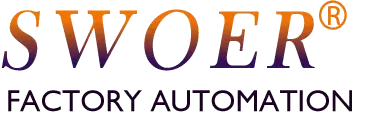The connection forms a control loop: the PLC commands the bowl, and sensors provide feedback.
- Hardware Connection
- Power Connection
- विवरण: The bowl requires a power source. This is controlled indirectly via a relay.
- Wiring:
- Connect bowl power to the relay’s output contacts.
- Connect one side of the relay coil to a DC power supply.
- Connect the other side of the coil to a PLC digital output.
- Control Signal Connection
- Input Signal:
- Source: A sensor detects part presence.
- Wiring: Connect the sensor output to a PLC digital input.
- Output Signal:
- Target: The relay controlling the bowl’s main power.
- Wiring: The PLC digital output controls the relay coil.
- Control Logic
The basic PLC logic is:
pseudocode
IF [Sensor] = “No Part”:
THEN Turn ON [PLC Output] -> Relay Engages -> Bowl Runs
ELSE IF [Sensor] = “Part Present”:
THEN Turn OFF [PLC Output] -> Relay Disengages -> Bowl Stops
III. Advanced Connections
For speed control:
- Analog Control: A PLC analog output sends a signal to the bowl controller for speed adjustment.
- Communication Control: Using protocols like Modbus for advanced command and monitoring.
Key Point: The PLC does not directly power the bowl but uses a relay for isolation, creating an automated start/stop loop based on sensor feedback.
